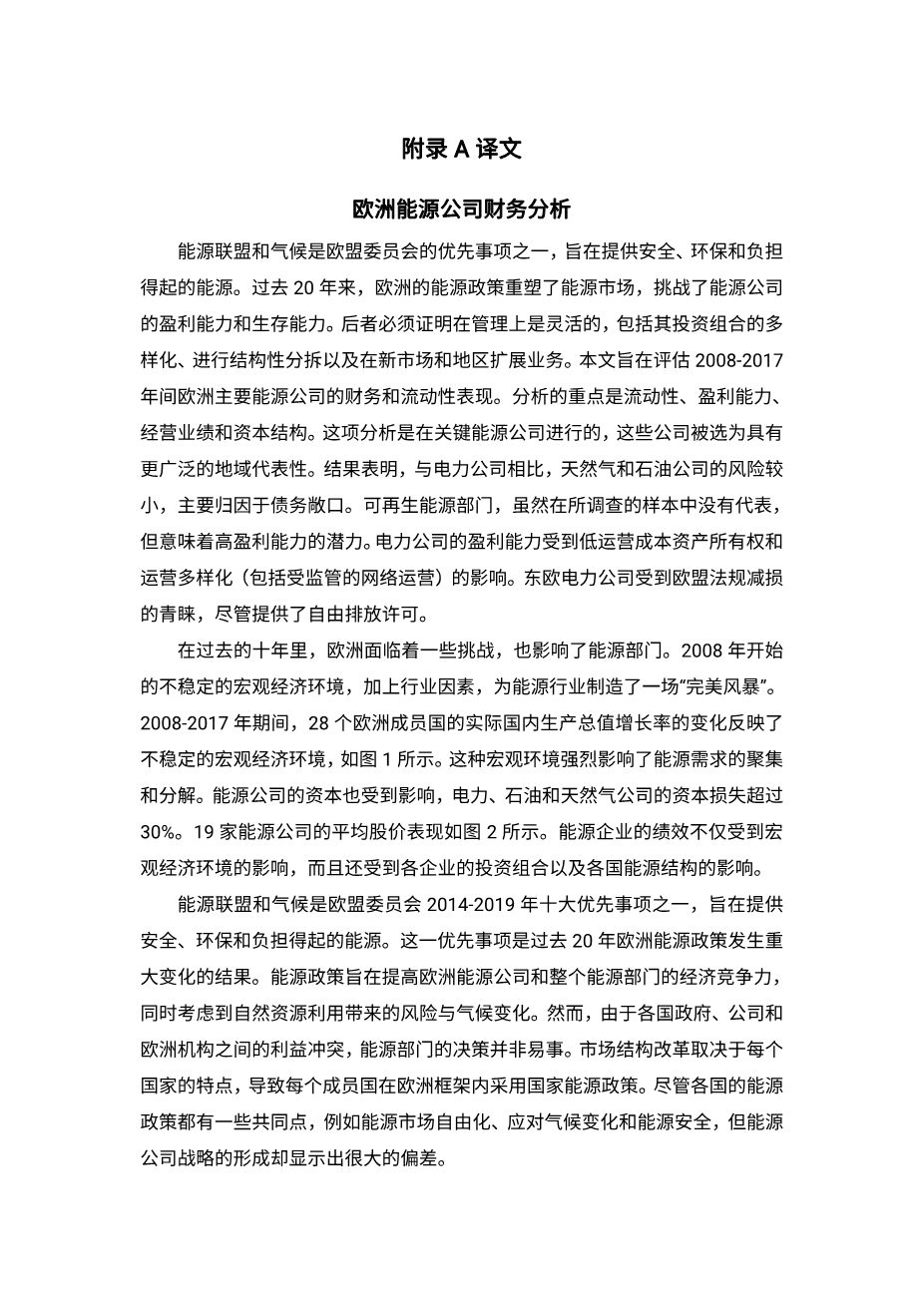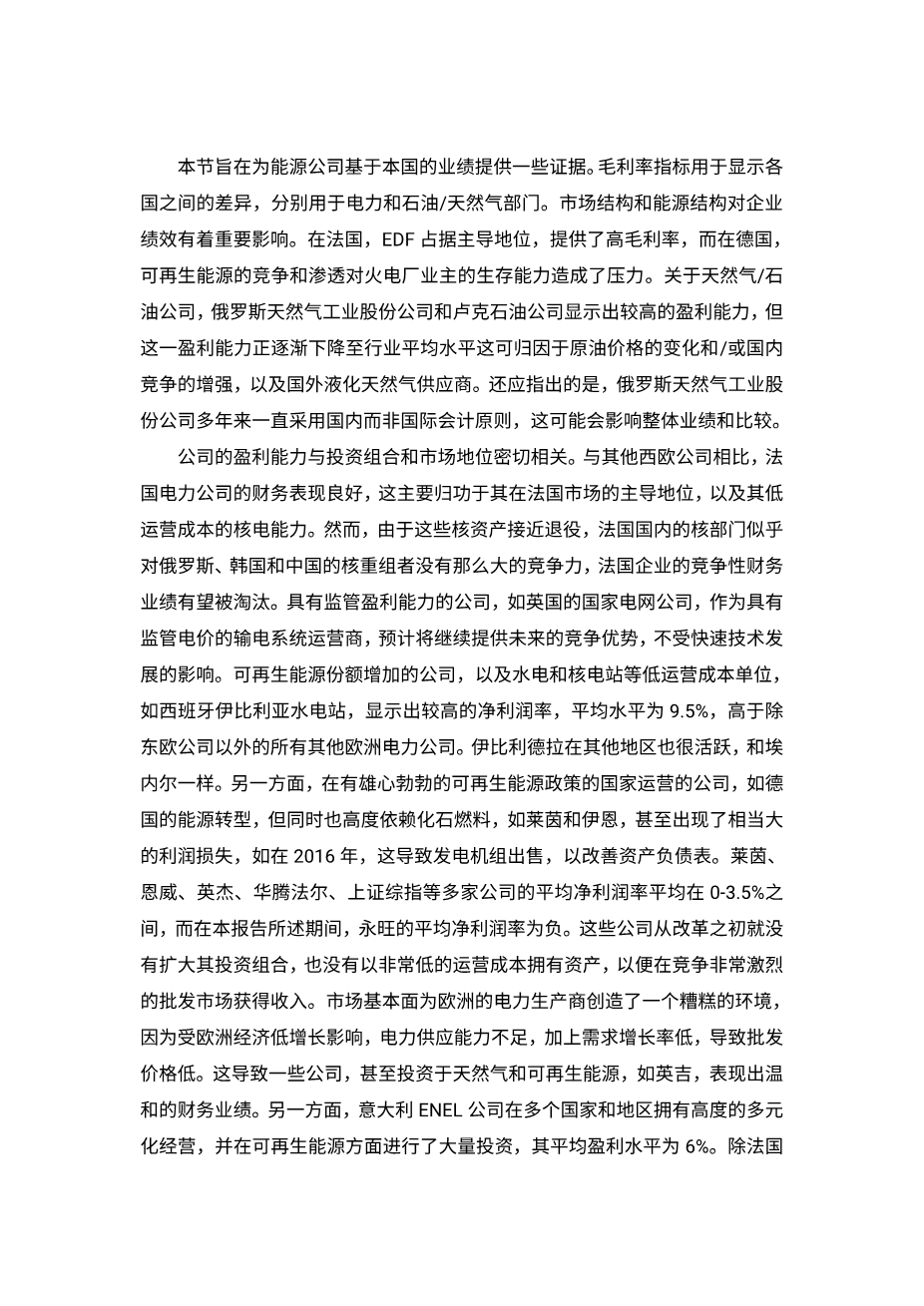欧洲能源公司财务分析外文翻译资料
2023-08-29 09:39:14
ARTICLE
Macro Management amp; Public Policies
https://ojs.bilpublishing.com/index.php/mmpp
Financial Analysis of European Energy Companies
Konstantinos Leventakos Athanasios S. Dagoumas*
Energy amp; Environmental Policy Laboratory, School of Economics, Business and International Studies, University of Pirae- us, Piraeus, 18532, Greece
ARTICLE INFO ABSTRACT
Article history
Received: 21 May 2019
Accepted: 2 July 2019
Published Online: 30 August 2019
Keywords:
European energy companies Financial analysis
Energy policy
Energy union and climate stands as one of the priorities of the European commission, aiming at the provision of secure, environmentally friendly and affordable energy. European energy policy over the last two decades have reshaped energy markets challenging the profitability and viability of energy companies. The latter must prove flexible in their management, including diversification of their portfolio, proceeding on structural unbundling and extending their operations in new markets and regions. Scope of the paper is to assess the financial and liquidity performances of key European energy companies over the period 2008-2017. The focus of the analysis concerns liquidity, profitability, operational performance and capital structure. The analysis is carried out in key energy companies, selected to have an extended geographical representation. Results indicate that gas and oil companies have less risk compared to power companies, attributed mainly to debt exposure. The renewable sector, although un- derrepresented in the examined sample, implies potential for high profit- ability. The profitability of power companies is affected by the ownership of assets with low operating costs and by diversification of operations, including regulated network operations. Eastern European power compa- nies are favored by the derogation of EU regulation, though provision of free emission allowances.
Introduction
E
nergy union and climate stands as one of the ten priorities of the European Commission over the period 2014-2019, aiming at the provision of secure, environmentally friendly and affordable energy. This priority came as a result of considerable changes in European energy policy over the last two decades. Energy policy aims at enhancing economic competitiveness of European energy companies and energy sector in general, considering the risks raising from natural resourcesrsquo; avail-
ability and climate change.
However, decision making in the energy sector is not an easy task, due to conflicting interests among national governments, companies and European institutions. Mar- ket structure reforms depend on the characteristics of each country, leading each member state to adopt a national energy policy [1] within the European framework [2]. Al- though there are some common elements in energy policy for each country, such as liberalization of energy markets, tackling climate change and energy security, the formation of the strategy of energy companies show high deviations,
*Corresponding Author:
Athanasios S. Dagoumas,
Energy amp; Environmental Policy Laboratory, School of Economics, Business and International Studies, University of Piraeus, Piraeus, 18532, Greece;
as some choose for radical changes, diversifying of port- folios and operations, while other might insist on conven- tional business that proved successful for many years in the past. Therefore, reforms take place in each country at different extent and timing [3].
Liberalization of energy markets, structure reforms form vertical integration to ownership unbundling [4] and other reforms have reshaped European energy markets, especially in the electricity and gas sectors [5,6]. However, those changes have challenged the structural organization of energy companies [7], as well as the profitability and viability of dominant energy companies. Energy compa- nies need to be flexible to the radical changes in the new energy markets structure. Moreover, the rising of environ- mental awareness lead to decarbonization pathways for energy companies, accompanied with uncertain evolution of carbon pricing, that affects their profitability [8,9,10]. En- ergy companies face risks for their operation, requiring sophisticated models for risk strategies [11,12]. Therefore, the effects of those changes on the economic performance of key energy companies are essential to be studied. Scope of the paper is to assess the financial and liquidity perfor- mance, as well as the profitability of key European energy companies over the last decade, namely the period 2008- 2017.
The paper is organized in the following way: In section 2 the key energy companies, selected for our analysis, as well as the macroeconomic environment are presented. Section 3 provides methodology adopting for assessing the financial performance of the examined energy compa- nies, while section 4 provides the conclusions.
Energy Sector and Macroeconomic Envi- ronment
Energy Sector
This section provides the sample of the companies that have been selected to be examined, as well as the indi- cators selected for assessing their financial performance. The selected sample concerns key European energy companies, organized in three classifications to depict differences in the energy subsector that they operate, but as well as differences in their geographical location. The last category, namely Renewables, is represented by only one company. This is not attributed to the limited activity in this sector, as most energy utilities of the first catego- ry are also invest
剩余内容已隐藏,支付完成后下载完整资料


英语译文共 6 页,剩余内容已隐藏,支付完成后下载完整资料
资料编号:[607479],资料为PDF文档或Word文档,PDF文档可免费转换为Word




